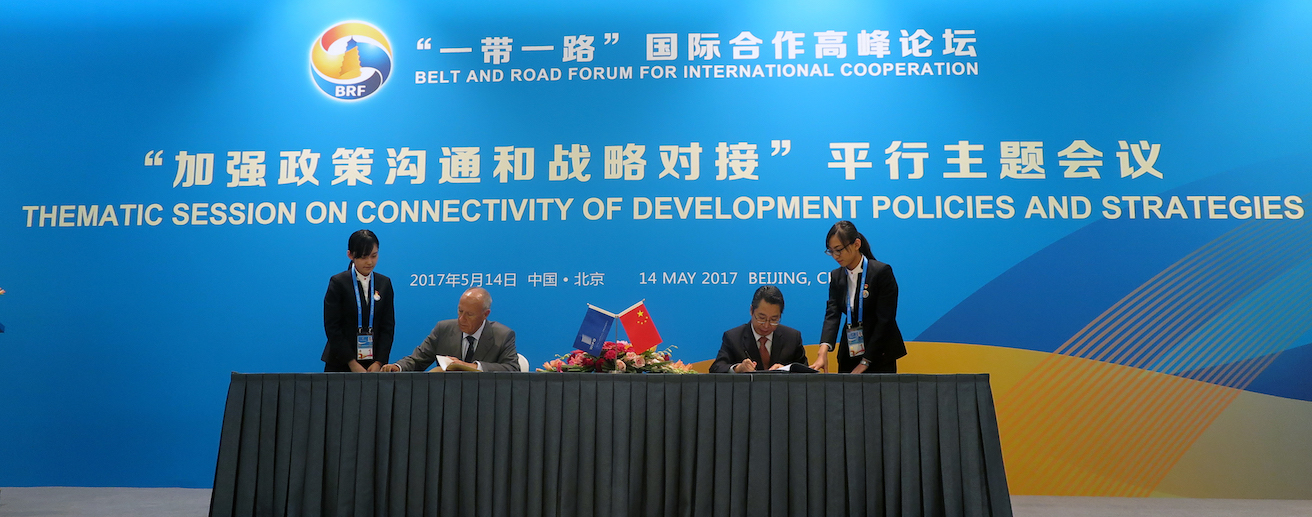Belt and Road Summit in Hong Kong: Toward a BRI 2.0?

The upcoming Belt and Road Summit will be held amidst the current political chaos in Hong Kong. The protests may be an impediment to the summit, but the summit may be an opportunity to expose the youth in Hong Kong to new opportunities.
From 11 to 12 September 2019, the fourth Edition of the Hong Kong Belt and Road Summit is due to take place at the Wanchai Convention Center. The Belt and Road Initiative (BRI) is now in its sixth year since its original launch in fall 2013 refers to the massive mobilisation effort led by China to accelerate connectivity and trade in Eurasia, and also in Africa and Latin America through massive infrastructure investment and other exchanges. It is mostly funded by Chinese development and industrial banks.
Following the three previous events, this summit is scheduled to bring together hundreds of top business executives from across Asia, as well as some European and North American leaders to share experiences and expert advice on the progress of the Belt and Road Initiative worldwide. It is meant to place Hong Kong at the heart of this massive global infrastructure and trade initiative, leveraging the city’s unmatched know-how, financial skills, and risk-management expertise.
The program is focused on key frontier issues of the Belt and Road, namely sustainable infrastructure project management, risk transfer and the use of fintech or the management of geopolitical risks.
However, unlike the previous three instalments, this summit is happening at a delicate time and its success will depend on its ability to address two critical issues. First, it is occurring right in the midst of the largest political protests and civil unrest in Hong Kong’s history in the wake of the extradition bill fiasco. Second, the event is also occurring just before the Mid-autumn Festival on September 13. That date has been set by many protesters as the deadline for the government to respond to their five demands. Although Carrie Lam just addressed the first demand on September 4, the government finds several of the other demands just impossible to meet – especially the electoral reform demand, which cannot only be decided by Beijing and is hard to imagine in the current environment. Will protests affect the summit, and can the summit help offer new opportunities for youth in Hong Kong? Given its business focus, the event may yet have a reasonably smooth sailing, but it will surely experience some cognitive dissonance with the situation in the streets outside.
Second, the event follows the second high-level Belt and Road Forum in Beijing, that took place between April 25 and 27 2019. It was attended by 5000 delegates from 150 countries, including top ministers from 5 out of seven G7 countries, only missing US and Canada, and most of Asia and G20 countries, namely India being a key gap. The summit marked the signing of 126 bilateral memorandum of understandings (MOUs) with separate countries. The key takeaway of the summit was a commitment by President Xi Jinping to address exposed weaknesses in some high-profile BRI projects and to improve the financial and environmental quality in the BRI. In his speech at the BRI summit on April 26, Xi Jinping declared: “we also need to ensure the commercial and fiscal sustainability of all projects so that they will achieve the intended goals as planned.” This commitment, along with commitments to a green BRI and a focus on openness and fair cooperation was seen as indicating a shift to an improved BRI 2.0.
Xi Jinping followed up on this new direction through his acceptance of the platform on “quality infrastructure,” pushed by Japanese Prime Minister Abe at the Osaka G20 Summit in 2019. This was seen as a compromise by China toward Japan and the international community. Can the Hong Kong Summit now pick up the ball of the BRI 2.0 challenge, helping improve the financial, environmental, and social sustainability of BRI projects, while incubating new connections and innovations, and offering a stake to the Hong Kong population? That is the challenge facing the summit this year.
The summit also takes place in the wake of fierce US-China debates around the geopolitics of the BRI. In his October 4, 2018 Hudson Institute Speech, Vice President Pence accused China of using the BRI to entrap countries into webs of dependence. He warned: “In fact, China uses so-called ‘debt diplomacy’ to expand its influence. Today, that country is offering hundreds of billions of dollars in infrastructure loans to governments from Asia to Africa to Europe and even Latin America. Yet the terms of those loans are opaque at best, and the benefits invariably flow overwhelmingly to Beijing.”
The available data so far shows that there is only one case of asset transfer resulting from a failing BRI project loan — the Hambantota port project in Sri Lanka. On the basis of thorough data collection of 1000 projects in Africa, Deborah Brautigam found no similar case and found that the accusation of BRI-inducted debt trap was mischaracterised. Similarly, the Rhodium Group reviewed 40 cases of China’s external debt renegotiations for distressed projects between 2015 and 2019 and found that 39 of them ended up with debt write-off, refinancing, or deferment. In other words, China conceded and forgave part of the debt, due to limited leverage and negotiating options. Only one case ended with asset seizure — the Sri Lanka case. It is also known that the proposal to transfer control of the port was made by the Sri Lankan side and not by China.
Nonetheless, the fact is that some high profile projects in places like Indonesia, Pakistan, Thailand, Malaysia and Kenya have hit major roadblocks in terms of land acquisition, demands for renegotiation, project feasibility, etc. In the rush to create big bang connections across Asia and beyond, Chinese banks and companies may have taken very large risks that were not fully analysed. There is an urgent need for quality expert work on quality project development, as is proposed by the Hong Kong summit.
In sum, the Hong Kong Belt and Road Summit may encounter roadblocks in the streets of Hong Kong, but the Asian and global expertise brought together by Hong Kong is highly needed to help the upgrade of BRI 2.0 into a slower, more systematic and truly transformative initiative.
Yves Tiberghien is a professor of political science at University of British Columbia (UBC), distinguished fellow at the Asia-Pacific Foundation; faculty associate at the School of Public Policy and Global Affairs (SPPGA) at UBC, and Vision 20 co-chair.
This article is published under a Creative Commons Licence and may be republished with attribution.





